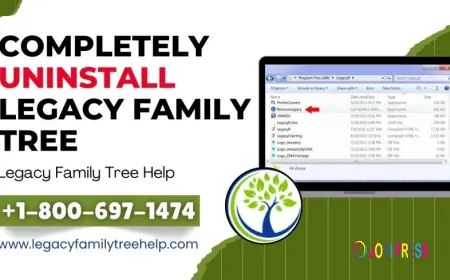Drainage Board Building Materials
Drainage Board Building Materials: A Critical Component of Modern Construction
In the realm of construction, managing water is just as important as managing load-bearing strength. Uncontrolled water infiltration can lead to mold, structural weakening, or even catastrophic failure. One of the most effective tools in preventing such issues is the Drainage Board Building Materials—a key building material that silently protects foundations, roofs, tunnels, and green roofs from water damage.
This article explores what drainage boards are, how they work, their types and materials, and why they are indispensable in contemporary building practices.
1. What is a Drainage Board?
A Drainage Board Building Materials is a synthetic or composite building material installed against foundation walls, under slabs, green roofs, or other critical areas to manage and divert water. Its core function is to:
-
Prevent water buildup behind walls
-
Promote effective drainage
-
Protect waterproofing membranes
-
Extend the life of structures
2. Why Drainage Boards Are Essential
a. Protection of Foundation Walls
Excess water pressure from soil (hydrostatic pressure) can weaken foundations. Drainage boards relieve this pressure by channeling water away from the wall.
b. Enhancing Waterproofing
Drainage boards often work in tandem with waterproofing membranes. They protect the membrane from backfill damage and allow water to drain into designated systems like French drains.
c. Green Infrastructure
In green roofs and podium decks, drainage boards provide water storage and air space, supporting plant roots while preventing oversaturation.
3. Types of Drainage Boards
Drainage boards come in various forms based on application and material:
a. Dimpled Drainage Boards
-
Structure: High-density polyethylene (HDPE) sheets with raised dimples.
-
Function: Create an air gap between the wall and soil, allowing water to flow down.
-
Uses: Basement walls, foundation waterproofing.
b. Sheet Drain Systems (Composite Drainage Boards)
-
Structure: Drainage core bonded to a nonwoven geotextile.
-
Function: Allows water in while filtering out soil particles.
-
Uses: Retaining walls, tunnels, underground structures.
c. Geocomposite Drainage Boards
-
Structure: Combines geotextile, drainage core (HDPE or polypropylene), and sometimes a protective film.
-
Function: Multifunctional drainage and filtration.
-
Uses: Bridge abutments, embankments, roof gardens.
d. Drainage Cell Systems
-
Structure: Interlocking plastic modules with high compressive strength.
-
Function: Drainage and water retention for rooftop gardens, terraces.
-
Uses: Green infrastructure, stormwater management.
4. Common Materials Used in Drainage Boards
|
Material |
Properties |
Common Applications |
|
HDPE (High-Density Polyethylene) |
Durable, flexible, chemical-resistant |
Foundations, basements, roofs |
|
Polypropylene |
Similar to HDPE but often lighter |
Podiums, landscapes, walls |
|
Geotextiles (nonwoven fabrics) |
Filtration, separation |
Paired with drainage cores |
|
Rubber or EPDM |
Elastic, good under root zones |
Green roofs |
5. Benefits of Using Drainage Boards
✅ Moisture Control
Efficient water evacuation from walls or surfaces prevents mold growth, efflorescence, and freeze-thaw damage.
✅ Longevity
By reducing water pressure and protecting waterproof membranes, drainage boards extend the life of the building envelope.
✅ Structural Safety
Minimizes hydrostatic pressure that can cause wall cracks or movement.
✅ Environmental Support
In green infrastructure projects, drainage boards help manage water sustainably and support biodiversity.
6. Installation Guidelines
Proper installation is key to maximizing drainage board effectiveness:
-
Surface Prep: Ensure wall surfaces are clean, smooth, and waterproofed.
-
Attachment: Mechanically fasten or adhere the board to the wall or deck.
-
Overlap & Sealing: Overlap adjacent panels to prevent gaps; seal joints if needed.
-
Backfill Carefully: Use clean fill material that won’t clog the board.
-
Connect to Drainage System: Ensure water collected is channeled to a drain or sump pump.
7. Applications of Drainage Boards
|
Area |
Purpose |
|
Foundation walls |
Diverts groundwater and relieves pressure |
|
Green roofs |
Balances water retention and drainage |
|
Retaining walls |
Prevents buildup of lateral water pressure |
|
Tunnels and subways |
Protects concrete from seepage |
|
Podiums and terraces |
Promotes runoff control and load balance |
8. Innovations in Drainage Board Technology
-
Smart Drainage Boards: Embedded sensors for real-time monitoring of water movement
-
Recyclable Boards: Eco-friendly boards made from recycled plastics
-
Modular Drainage Cells: Allow custom configurations for urban green spaces
-
Hybrid Systems: Combine water retention, insulation, and drainage in one layer
9. Considerations When Choosing Drainage Boards
-
Load-bearing capacity: Especially critical for roofs and under slabs
-
Chemical resistance: For contaminated soils or industrial applications
-
Permeability: Needed for filtering soil particles in geocomposites
-
Cost and availability: Budget constraints may guide material selection
-
Ease of installation: Can reduce labor costs
10. Conclusion: The Unsung Hero Beneath Our Structures
Drainage boards might not be visible after construction, but their impact is profound. By quietly managing water and protecting structural integrity, they play a vital role in the health and performance of buildings. As sustainable and resilient construction becomes the new norm, drainage board systems are evolving to meet the needs of green cities and climate-adapted infrastructure.
What's Your Reaction?
 Like
0
Like
0
 Dislike
0
Dislike
0
 Love
0
Love
0
 Funny
0
Funny
0
 Angry
0
Angry
0
 Sad
0
Sad
0
 Wow
0
Wow
0


















































